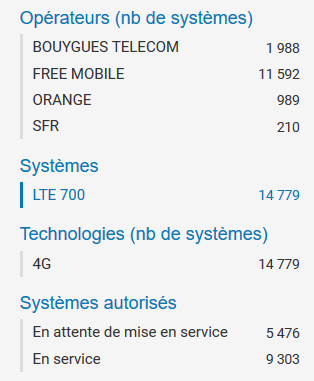Hello everybody,
Since the delivery of our beloved Librem 5 is only a matter of weeks (a more or less number of weeks …), I open this topic to discuss the choice of the ideal modem for French users: Gemalto PLS8-E or BroadMobi BM818-E1 ?
I am well aware that this subject will be very similar to those of other European countries, but I wonder if there are not specificities that would have escaped me compared to the French network
My references are mainly Chosing the right modem PLS8 vs BM818 and https://fr.wikipedia.org/wiki/Fréquences_de_téléphonie_mobile_en_France
Here are my thoughts : the B28 frequency band seems to be missing on each of them and it is a low frequency band and therefore rather efficient in distance and through obstacles, my heart says Gemalto because it is manufactured by neighbors but my head says BroadMobi because more frequencies bands (maybe useless) and faster (Cat4 vs Cat3).
Hoping I’m not the only French user, do not hesitate to tell me what you think.
See you.
La même en français :
Bonjour tous le monde,
Etant donné que la livraison de notre bien-aimé Librem 5 n’est qu’une question de semaines (un nombre plus ou moins grand de semaines …), j’ouvre ce sujet pour discuter du choix du modem idéal pour les utilisateurs français: Gemalto PLS8-E ou BroadMobi BM818 -E1?
Je suis bien conscient que ce sujet sera très similaire à celui d’autres pays européens, mais je me demande s’il n’ya pas des spécificités qui m’auraient échappées par rapport au réseau français.
Mes références sont principalement Chosing the right modem PLS8 vs BM818 et https://fr.wikipedia.org/wiki/Fréquences_de_téléphonie_mobile_en_France
Voici ce que je pense: la bande de fréquence B28 semble manquer à chacun d’eux et c’est une bande basse fréquence et donc plutôt efficaceen distance et à travers les obstacles, mon cœur dit Gemalto car il est fabriqué par des voisins, mais ma tête dit BroadMobi car plus de bandes de fréquences (peut-être inutiles) et plus rapide (Cat4 vs Cat3).
En espérant que je ne suis pas le seul utilisateur français, n’hésitez pas à me dire ce que vous en pensez.
A plus.

